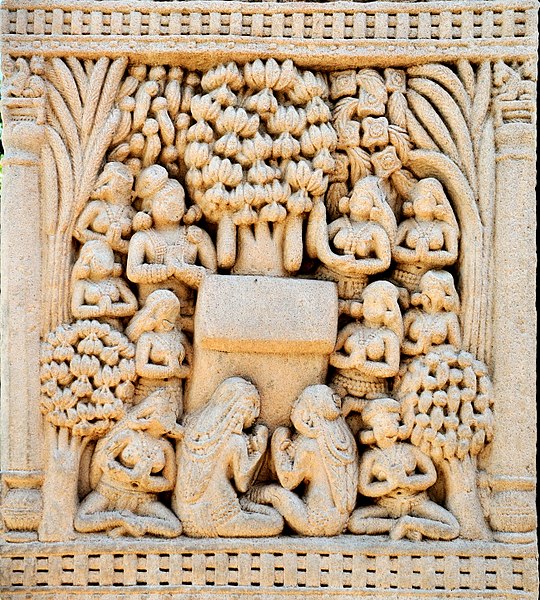Bimbisāra or རྒྱལ་པོ་གཟུགས་ཅན་སྙིང་པོ་ (Tibetan) or Shrenika and Seniya in the Jain histories was
the King of Magadha and belonged to the Haryanka dynasty. He was the son of Bhattiya. His expansion of the kingdom, especially his annexation of the kingdom of Anga to the east, is considered to have laid the foundations for the later expansion of the Mauryan Empire.
Bimbisara with his royal cortege issuing from the city of Rajagriha to visit the Buddha.
King Bimbisara visits the Bamboo Garden (Venuvana) in Rajagriha; artwork from Sanchi
Bimbisara's jail, where King Bimbisāra was imprisoned, in Rajgir
Bimbisara welcomes the Buddha
Magadha also called the Kingdom of Magadha or the Magadha Empire, was a kingdom and empire, and one of the sixteen Mahajanapadas, 'Great Kingdoms' of the Second Urbanization, based in southern Bihar in the eastern Ganges Plain, in Ancient India. Magadha was ruled by the Brihadratha dynasty, the Pradyota dynasty, the Haryanka dynasty, the Shaishunaga dynasty, the Nanda dynasty, the Mauryan dynasty, the Shunga dynasty and the Kanva dynasty. It lost much of its territory after being defeated by the Satavahanas of Deccan in 28 BC and was reduced to a small principality around Pataliputra. Under the Mauryas, Magadha became a pan-Indian empire, covering large swaths of the Indian subcontinent and Afghanistan.
Magadha empire under Kanva dynasty
Cyclopean Wall of Rajgir which encircled the former capital of Magadha, Rajgir. Amongst the oldest pieces of cyclopean masonry in the world
King Bimbisara visits the Bamboo Garden (Venuvana) in Rajagriha; artwork from Sanchi.
Magadha kingdom coin, c. 350 BCE, Karshapana







